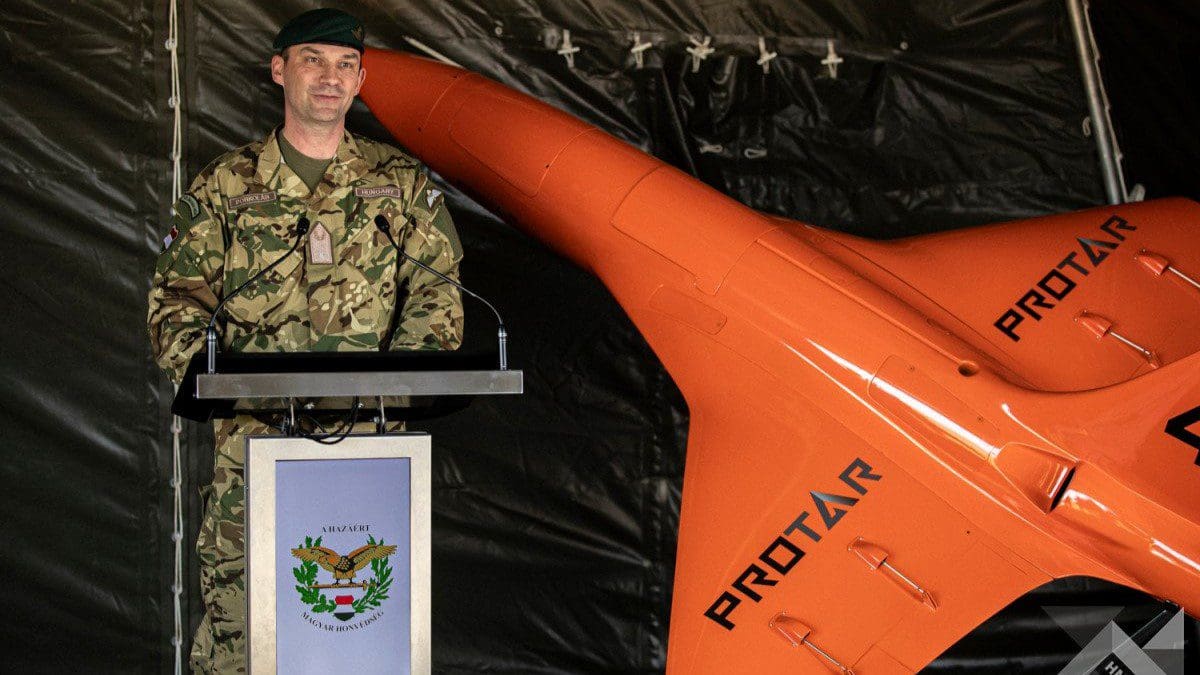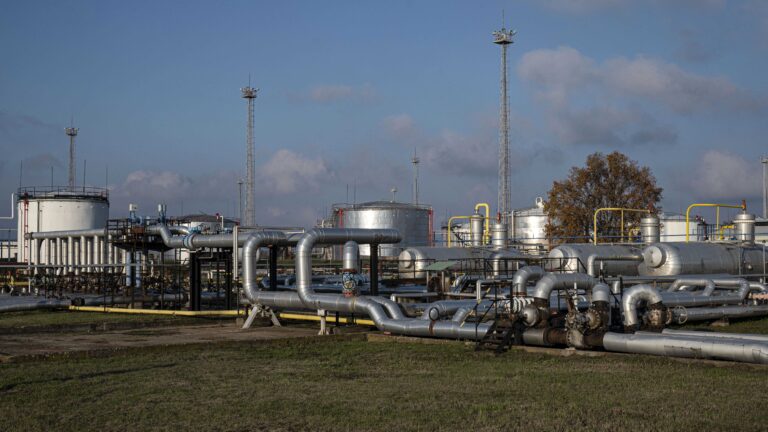The Hungarian Defence Forces recently unveiled the first Hungarian-developed unmanned aircraft. The jet-propelled ProTAR drone is intended to strengthen the air defence capabilities of the Hungarian military and represents a novel technology that will be able to compete on the international market.
On 10 June, the first Hungarian-developed unmanned aerial vehicle was unveiled at the zero-point training and firing range of the Bakony Fighter Training Centre. The ProTAR F4J fixed-wing, jet-powered, unmanned military drone weighs 68 kilogrammes, has a top speed of about 500 kilometres per hour, can take off at an altitude of 6,000 metres and has a communication range of 75 kilometres. The drone has an operating time of one hour. The equipment consists of three parts: the aircraft, the catapult and the ground control station. An innovative feature of the Hungarian drone is that it can fly three aircraft in formation at the same time, a unique capability in the international drone market.
‘Drone technology is a priority industrial and defence area in Hungary,’ Zsolt Molnár, the CEO of Rotors & Cams Ltd., the developer of the newly revealed ProTar drone highlighted.
The advanced, jet-powered aircraft is being developed by Rotors & Cams Zrt. together with Genevation Aircraft Kft. and HunMech Kft. on the order of the Hungarian Defence Forces Modernisation Institute. Rotors & Cams Ltd. was established as a subsidiary of the 4iG Group. At the event, László Blénessy, Deputy CEO of 4iG, said that his company is engaged in developing in the fields of IT, telecommunications, and defence technology and that the new drone is the result of technological development involving all three areas.
The ProTAR jet drone is specifically designed for military use, as a defensive unmanned aerial system designed to improve the air defence capabilities of the military. The new technology is also making its mark in the international market, Brigadier General Imre Porkoláb, Ministerial Commissioner for Defence Innovation remarked, stating:
‘This drone is the result of several years of development work and the cooperation of Hungarian engineers. It is faster, it can take off higher, it can perform complex manoeuvres and, as it has been emphasised, it is also capable of formation flying, which is unique on the market, so we can simulate scenarios for the soldiers with these drones that were not possible before and create a more realistic training environment.’
‘Force development can only be successful by building up the Hungarian defence industry,’
the commissioner added, recalling that one of the main victims of the regime change was the defence industry, which is why the development of the sector had to be fully restarted in 2010.
The Hungarian defence sector was a neglected area for decades following the system change, and the negative trend did not substantially change even after the country acceded to NATO in 1999. The size and capabilities of the Hungarian armed forces kept being drastically reduced and, with a few exceptions, the focus was on maintaining the rusting military equipment left over from Soviet times in working order. Finally, in 2016, a long overdue force development programme, the Zrínyi 2026, was announced with the objective of increasing the size and level of ambition of the Hungarian armed forces, primarily through the procurement of state-of-the-art military technology and personnel equipment. To achieve the latter, Hungary not only intends to rely on foreign suppliers but also aims to rebuild the country’s once-functioning defence industry.
After a demonstration flight of the drone, Brigadier General Porkoláb also stressed that in the current international situation, airspace protection is of paramount importance, and the use of drones is becoming increasingly important. This is confirmed by the latest experiences of the war in Ukraine. In the first phase of the war in particular, drones such as the famous Turkish Bayraktar TB2 played a prominent role and contributed considerably to the success of the Ukrainian war effort. Although the war in Ukraine has drawn attention to these UAVs, the increasing use of drones for wider military purposes can be seen as a multi-year trend with which the development of the Hungarian Defence Forces is also aligned. One of the results of this is the newly unveiled ProTar drone.
This year, the Hungarian Drone Coalition also would like to present a comprehensive drone strategy to the Hungarian parliament, which would include defence and the protection of critical infrastructure by drones as a main focus. The strategy also aims to make Hungary a model for the application of the EU's uniform legislation by creating the appropriate legal environment in the country.
Read more:








